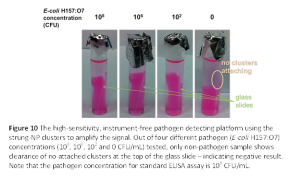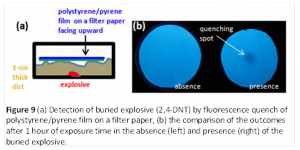Molecular Transfer between Nanoparticles
- Scientific Significance: Molecular transfer between nanoparticles controls many important biological functions. One example is to transfer excessive cholesterol from blood stream to disk-like high density lipoprotein (HDL). One of our research focuses is to investigate the transfer mechanism of molecules (e.g., lipids, hydrophobic molecules) from one to another aggregate at the molecular level in aqueous solutions. The transfer rate strongly depends on association-dissociation, diffusion and hydrophobicity of the molecules.
- Applications: treatment for cardiac diseases related to high cholesterol content.
- Result: Several approaches (including neutron scattering, fluorescence and differential scanning calorimetry) are applicable to identify the different controlling factors. More results will be updated soon.
- Interaction between Fluorophores and Host Matrices
- Scientific Significance: Fluorescence has been widely applied to sensing technology over decades. The environment of fluorophores can dictate their quenching efficiency, consequently
 affecting their performance. Our research of correlating the fluorescence of pyrene excimer and its host matrix (molecular structure and physical properties) can lead to an important breakthrough for enhancing sensitivity of fluorophores.
affecting their performance. Our research of correlating the fluorescence of pyrene excimer and its host matrix (molecular structure and physical properties) can lead to an important breakthrough for enhancing sensitivity of fluorophores. - Applications:sensing materials.
- Result: Our research shows that the fluorescence of pyrene excimer strongly depends on flexibility and compositions of its host matrix (e.g., polymers, salts). Unique properties are observed when the host matrix contains tetrabutylammonium hexafluorophosphate, which incorporates with the solvent effect during the evaporation process can produce either highly fluorescence (prepared at high T) or complete quenching (prepared at low-T) materials. The pyrene/polymer films can be used for detecting buried nitro-explosives with high sensitivity as shown in 9(experiment done by Hyun-Sook Jang).
